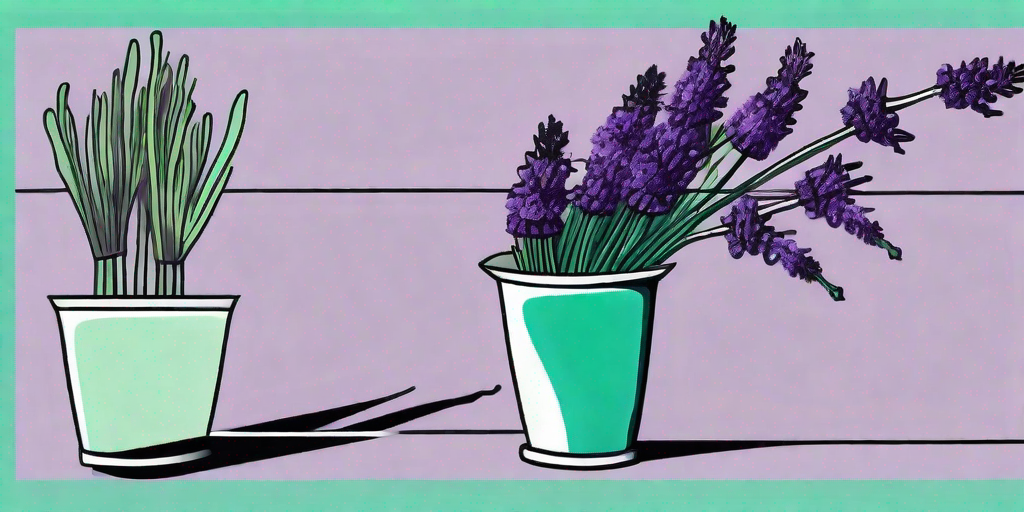
If your lavender plants are looking a bit under the weather, don't fret! With a little bit of love and care, you can bring them back to their blooming best. In this guide, we'll walk you through the steps to perk up your droopy lavender plants and transform your garden into a lavender lover's paradise.
Understanding Lavender Plants
Before we dive into the nitty-gritty of lavender care, let's take a moment to understand these fragrant beauties. Lavender plants, known scientifically as Lavandula, are a genus of 47 known species of flowering plants in the mint family, Lamiaceae. They are native to the Old World and are found from Cape Verde and the Canary Islands, Europe across to northern and eastern Africa, the Mediterranean, southwest Asia to southeast India.
These plants are best known for their vibrant purple flowers and distinctive scent, which is often used in perfumes, soaps, and essential oils. But beyond their aesthetic and aromatic appeal, lavender plants are also incredibly resilient, capable of thriving in a variety of climates and conditions.
The Anatomy of a Lavender Plant
Understanding the anatomy of a lavender plant can help you better care for it. The plant is made up of several key parts, each with its own role to play. The roots absorb water and nutrients from the soil, the stems provide support and transport nutrients, the leaves carry out photosynthesis, and the flowers, well, they're just there to look pretty (and attract pollinators, of course).
When your lavender plant is drooping, it's usually a sign that one or more of these parts isn't functioning as it should. But don't worry, we'll get to the bottom of it!
Identifying the Problem
Before you can fix your droopy lavender plant, you need to identify the problem. There are several common issues that can cause lavender plants to droop, including overwatering, underwatering, poor soil conditions, and pest infestations.
Overwatering is the most common cause of drooping lavender plants. These plants are native to the Mediterranean region and are adapted to dry, sunny conditions. If they receive too much water, their roots can become waterlogged and oxygen-starved, leading to drooping and wilting.
Signs of Overwatering
How can you tell if your lavender plant is getting too much water? Look out for yellowing leaves, a musty smell, and of course, drooping or wilting. If the soil is constantly damp, that's another red flag.
Underwatering, on the other hand, can also cause drooping, as the plant doesn't have enough water to maintain its structure. Signs of underwatering include dry, brittle leaves and a general lack of vigor.
Checking Soil Conditions
Lavender plants prefer well-draining soil. If your soil is heavy and clay-like, it may be retaining too much water and suffocating your plant's roots. On the flip side, if your soil is too sandy, it may not be retaining enough water, leading to underwatering.
Pest infestations can also cause drooping. Common pests that target lavender plants include aphids, whiteflies, and spider mites. These pests can suck the sap from your plant, causing it to wilt and droop.
Reviving Your Lavender Plant
Now that we've identified the problem, let's get to the fun part: reviving your lavender plant! Here's a step-by-step guide to perking up your droopy lavender:
- Adjust your watering schedule: If you're overwatering, cut back on the amount of water you give your plant. If you're underwatering, give it a bit more. Remember, lavender plants prefer to be on the dry side, so when in doubt, water less.
- Improve your soil: If your soil is too heavy or too sandy, consider adding organic matter or sand to improve its texture and drainage.
- Treat pest infestations: If pests are the problem, consider using an organic pesticide or introducing beneficial insects, like ladybugs, to your garden.
- Prune your plant: Pruning can help improve air circulation and encourage new growth. Just be sure not to overdo it, as lavender plants don't like to be pruned too hard.
With these steps, your lavender plant should be back to its blooming best in no time!
Frequently Asked Questions
Why is my lavender plant drooping?
There could be several reasons why your lavender plant is drooping, including overwatering, underwatering, poor soil conditions, and pest infestations.
How often should I water my lavender plant?
Lavender plants prefer to be on the dry side, so it's better to underwater than overwater. A good rule of thumb is to water when the top inch of soil is dry.
What type of soil do lavender plants prefer?
Lavender plants prefer well-draining soil. If your soil is heavy and clay-like, consider adding organic matter or sand to improve its texture and drainage.
How can I treat a pest infestation on my lavender plant?
If pests are the problem, consider using an organic pesticide or introducing beneficial insects, like ladybugs, to your garden.
Conclusion
Reviving a droopy lavender plant may seem like a daunting task, but with a little bit of knowledge and care, it's entirely doable. Remember, the key to a healthy lavender plant is balance. Not too much water, not too little. Good soil, but not too heavy. And of course, a watchful eye for any pesky pests. With these tips in mind, your lavender plant will be back to its blooming best in no time. Happy gardening!











